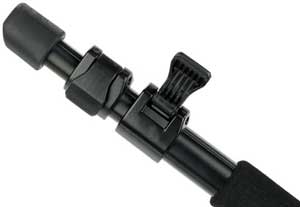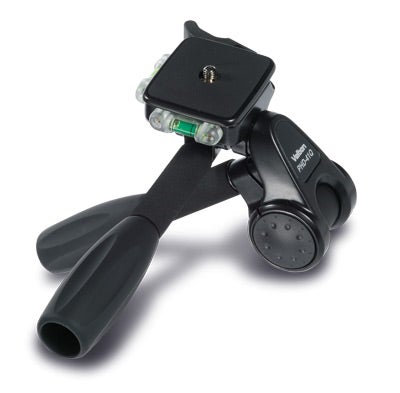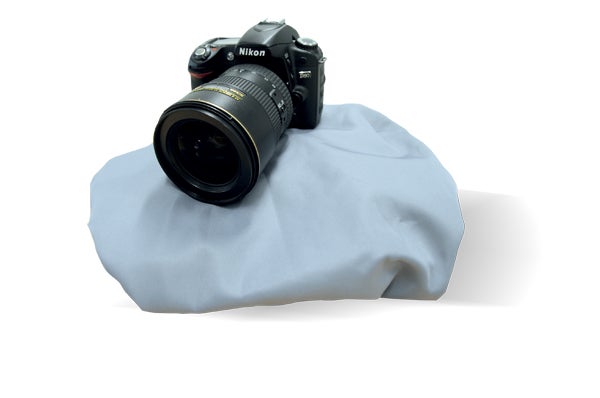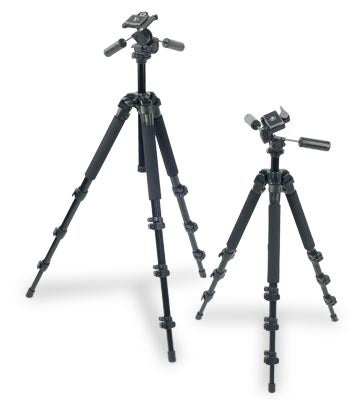Whether youu2019re shooting landscapes or the kids in your front room, if your camera isnu2019t held steady, youu2019re going to get blurred images. The best solution is a tripod or monopod, and to help you decide which is for you here's our complete guide to choosing a tripod...
Behold, our invaluable three-legged friend – the humble tripod! Investing in one of these is the single greatest thing we can do to improve the sharpness of our pictures and to unlock our creativity. But which tripod to buy? There are so many! Just follow our guide to the key features you should consider.
Things to look out for…
Leg Construction
All tripods have three legs, but there the similarities end. Most tripods are made from aluminium, but the thickness and strength of the legs varies greatly. Very light aluminium tripods are likely to be flimsy and wobbly, and are best avoided. On the other hand the better quality ones can be quite heavy.
Carbon Fibre legs provide the best weight/stability ratio, shaving on average a third off the weight yet with even greater rigidity, but they’re at least double the price of comparable aluminium legs. Still, if you’re going to be carrying your tripod a lot it may be worth the investment.
Leg Sections
Most tripods feature telescopic leg sections that extend into either three or four sections. Three sections means there’s less locking and unlocking of each leg to be done, but with four sections the tripod can collapse to a smaller size, making it easier to carry, and to pack into a suitcase for travelling.

Leg Locks
Most leg sections must be unlocked to extend them, then locked again before use. There are two main types of leg lock. The most popular is the quick release lever, which is the speediest system to operate. Twist action legs locks are slower to use, more prone to slippage and less easy to see at a glance whether they’re locked, but there are no chunky attachments to stick-out and add bulk.
Premium twist locks, such as those on Gitzo tripods, don’t suffer from these issues as much but cost a lot more.
Leg Angle Adjustments
Most decent tripods enable the legs to be opened out at a range of angles right up to 90° to the centre column. This makes it easier to set the tripod up on uneven ground, or to splay the legs wide for low level shooting. With Benbo tripods all the legs can be simultaneously set to any angle via a single lock.
Leg covers
Some tripods come with foam leg covers, or ‘leg-warmers’. While by no means an essential feature hey do make the tripod more comfortable to hold and carry, especially in very cold weather when the metal can be, quite literally, freezing.
Feet
Most tripods come with rubber feet, but if you often shoot in muddy fields you may prefer spikes for a firmer grip. Some tripods offer both, with rubber feet that screw up to reveal spikes.
Centre Column
The centre column enables the camera to be raised a bit higher still, once the legs are fully extended, but its best to avoid using it if possible as it reduces the stability. They can be handy though for turning horizontally like a boom arm, making it easier to point the camera directly downwards towards the ground. Most columns have to be removed and re-inserted to achieve this, whlie most can also be inserted upside down for ground level photography.
Some centre columns feature a hook on the bottom to hang your camera bag – the extra weight helps stabilise the tripod, especially in windy conditions.
Tripod Head
A good tripod head – whether it be ball and socket or pan and tilt – is essential for quick operation, firm support and flexibility.

Tripod heads
Tripod heads come in various forms and the type you choose is down to the type of photography you take and often personal preference. Ballheads offer the most freedom; while pan and tilt heads allow greater accuracy and their ability to alter just one plane at a time can make them more suitable for panning. You’ll find all the major series of heads listed here, plus some more specialist ones too.
Ball heads
Ball and socket heads, or ball heads for short, allow your camera to be quickly adjusted in all directions and then clamped still in one single movement. This makes them ideal for when speed is of the essence and when your subject, or composition, needs adjusting for across more than one plane.
Over recent years the ball head has overtaken the traditional three-way head due to their flexibility and often that they are lighter units too. More advanced ball heads sometimes offer resistance control to allow for finer adjustment, spirit bubbles for levelling, and quick-release plates for easier attachment.
Pan and tilt heads
Pan and tilt heads, as their name suggests, provide their principal adjustments with a horizontal pan and a vertical tilt, and often add a third sideways movement for levelling or portrait shooting (a three-way head). By loosening all of the adjustment screws it is possible to move freely in any direction – much like the ball head – but by tightening one you can limit movement in a certain axis.
This makes these heads ideal for tracking subjects such as cars or wildlife. Their precise control over each axis also makes them suited to landscape and studio photography.
Panoramic heads
These specialist heads are designed to allow the camera to rotate around the exact ‘nodal’ point. By doing this it makes the process of stitching images together, to form a panorama, much easier as it avoids parallax errors (foreground in relation to background).
To correctly set these heads up requires some preparation and the positioning will vary for different lenses. Many photographers will mark the positions for each lens. The weight and added bulk of these heads mean they are not suitable for general use but, if you want a perfect panorama, you should definitely consider one.
Supports
Aside from tripods there is a wide range of other devices designed to help steady your camera and avoid camera shake. Depending on the type of photography you are doing, or where you are taking it, using a tripod isn’t always possible so these devices offer a support in other ways.
Beanbags are a popular choice for nature and travel photographers as they allow you to shoot from a low angle or steady the camera easily on a rough surface or ledge. Joby’s Gorillapods are also a handy alternative and have bendable legs that can wrap around objects to position your camera almost anywhere.

Monopod
A smaller and lighter alternative to a tripod, monopods are ideal for panning subjects and anywhere else where a tripod is impractical.
Other types of support
There are many versatile ways to make sure your camera is stable. If you don’t fancy a tripod, then maybe a beanbag or window support is for you.

Final tips on choosing a tripod
– Don’t buy cheap, flimsy tripods. It’s a false economy.
– Test the stability in the shop before buying, by extending the legs and pressing down from above. Make twisting and back-and-forth movements to see how much the legs wobble.
– If you plan to carry one on hikes, try to spend a bit more on a carbon fibre model. Your back will thank you.
– With tripods, the less plastic there is, the better. Avoid plastic heads especially.
– Keep a small support, such as a tabletop tripod seen below, in your bag for emergencies. It’s amazing how useful they can be.





